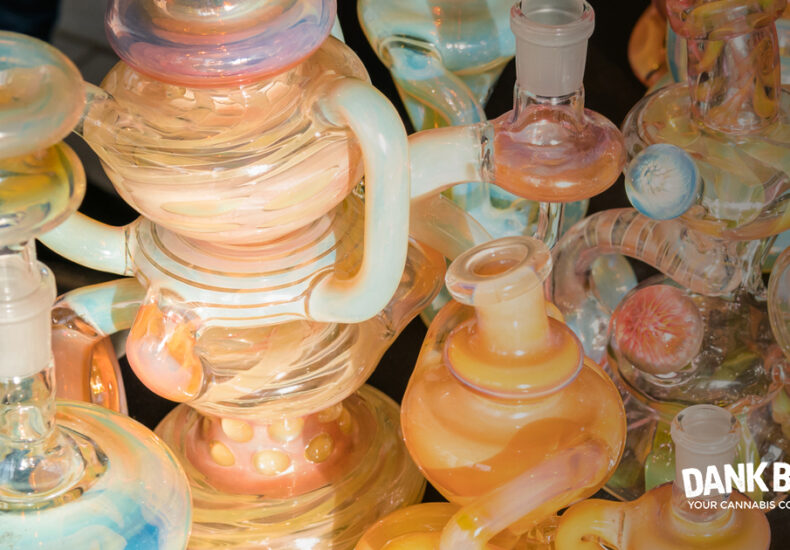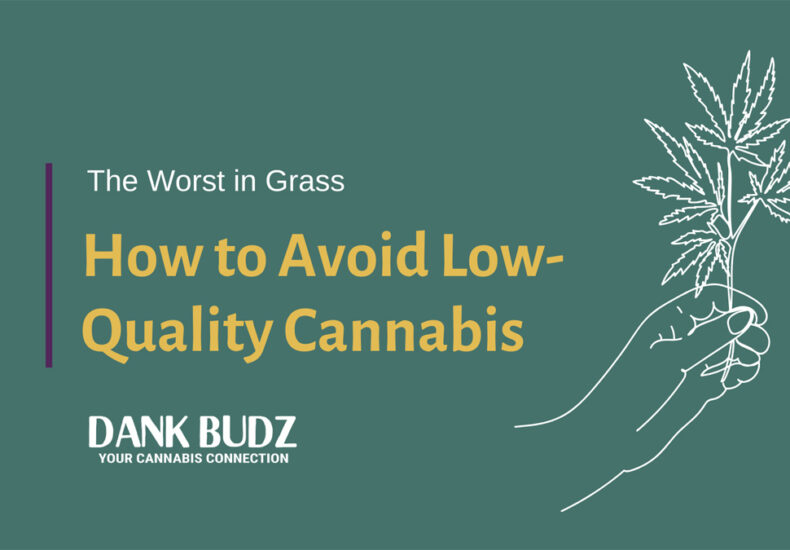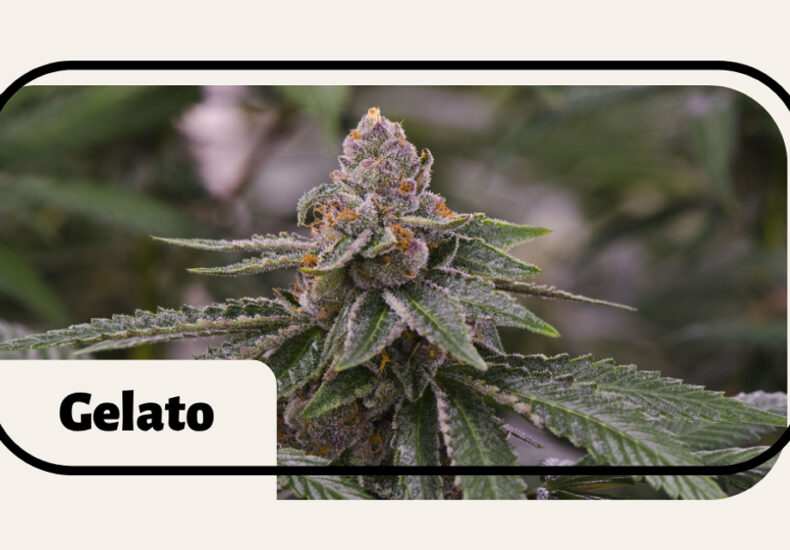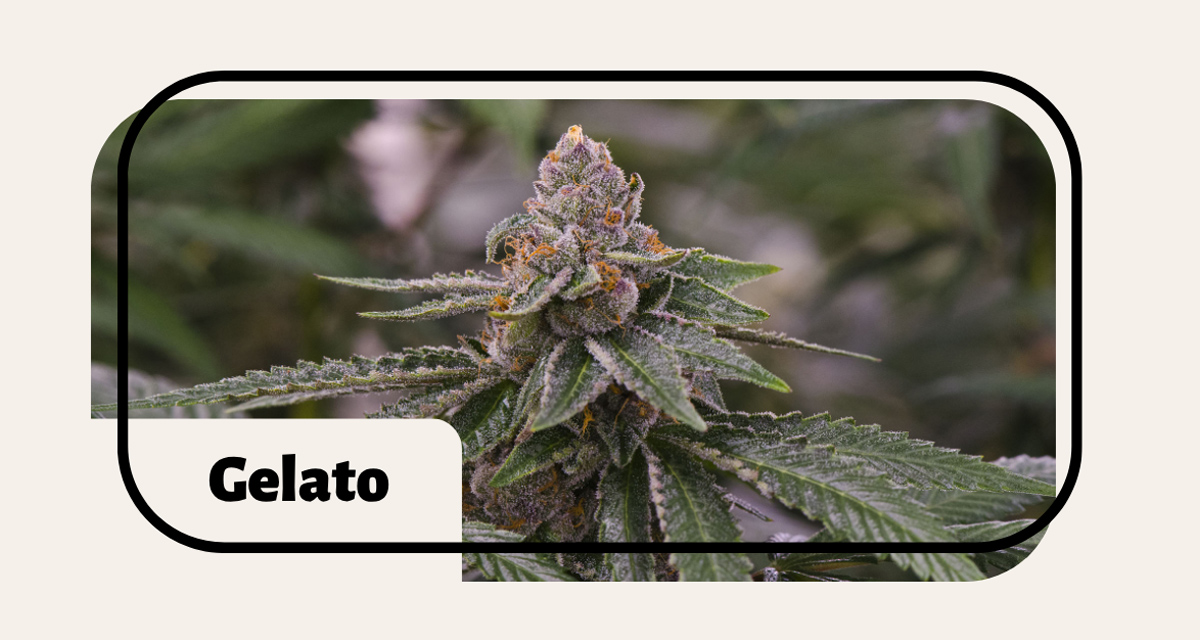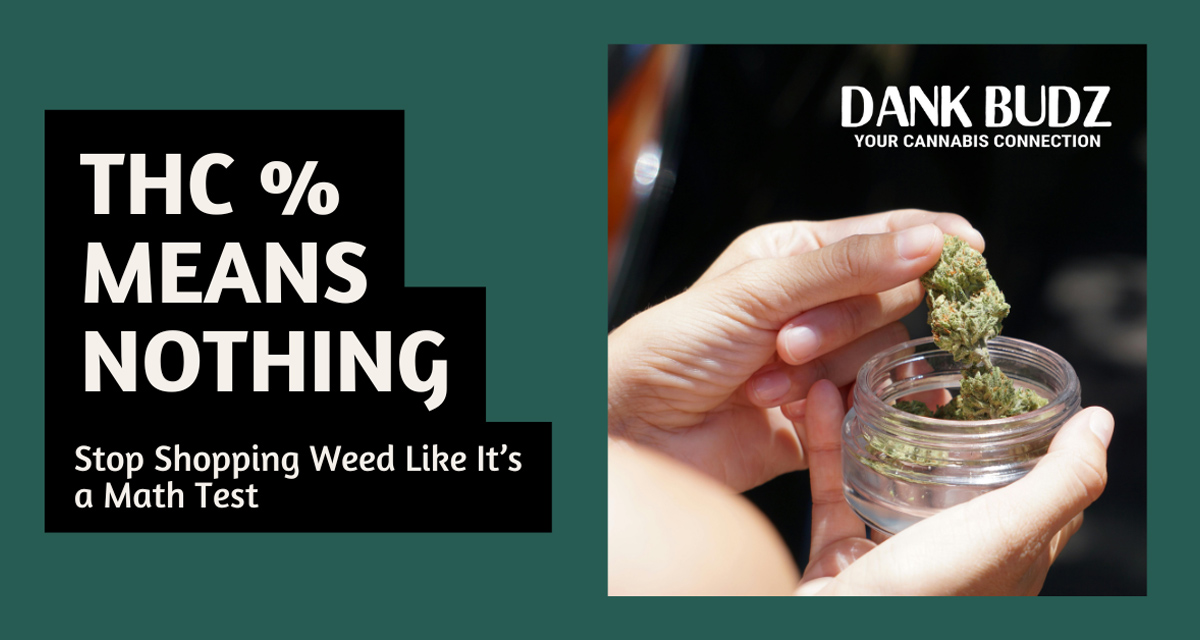
Over a million people saw our Threads post calling out THC percentages. And, the internet had thoughts. Some folks got it. Others got really mad. But one thing was clear: people are ready to talk about how we buy weed.
You’ve been told higher THC means better weed. Stronger. More potent. Worth your money.
But here’s the truth: you’ve been getting played.
We said it: “THC % means NOTHING.” That post took off for a reason, because a lot of people are still shopping for weed like it’s a math test.
We’re not saying THC doesn’t matter at all. It’s just not the full story. And the way it’s been hyped? That’s marketing, not medicine. If you’re chasing numbers, you’re probably missing the experience you’re actually looking for.
If you’re tired of mids in disguise, inflated lab scores, and weed that doesn’t hit like it used to, this one’s for you.
We’re breaking down how to shop smarter, get more from your flower, and stop wasting money on empty numbers.
Let’s get into it.
What THC Percentage Actually Tells You
THC stands for tetrahydrocannabinol. It’s the main psychoactive compound in cannabis, but it’s not the only thing that gets you high.
That THC number you see on the label? It tells you how much of the flower is made up of THC by weight. So yeah, 30% sounds like a lot. And it is. But that doesn’t automatically mean the weed will hit harder than something labeled at 18%.
Why? Because the experience of cannabis isn’t just about how much THC you’re consuming. It’s about how your body reacts to the full chemical profile of the plant. That includes terpenes, minor cannabinoids like CBG and CBN, and how all of it works together.
The THC percentage gives you one piece of info. But it doesn’t tell you how the weed was grown, how fresh it is, how clean the burn will be, or what kind of effects you’ll actually feel.
So if you’re shopping based on THC percentage alone, you’re only seeing part of the story.
Why Terpenes Matter More Than You Think
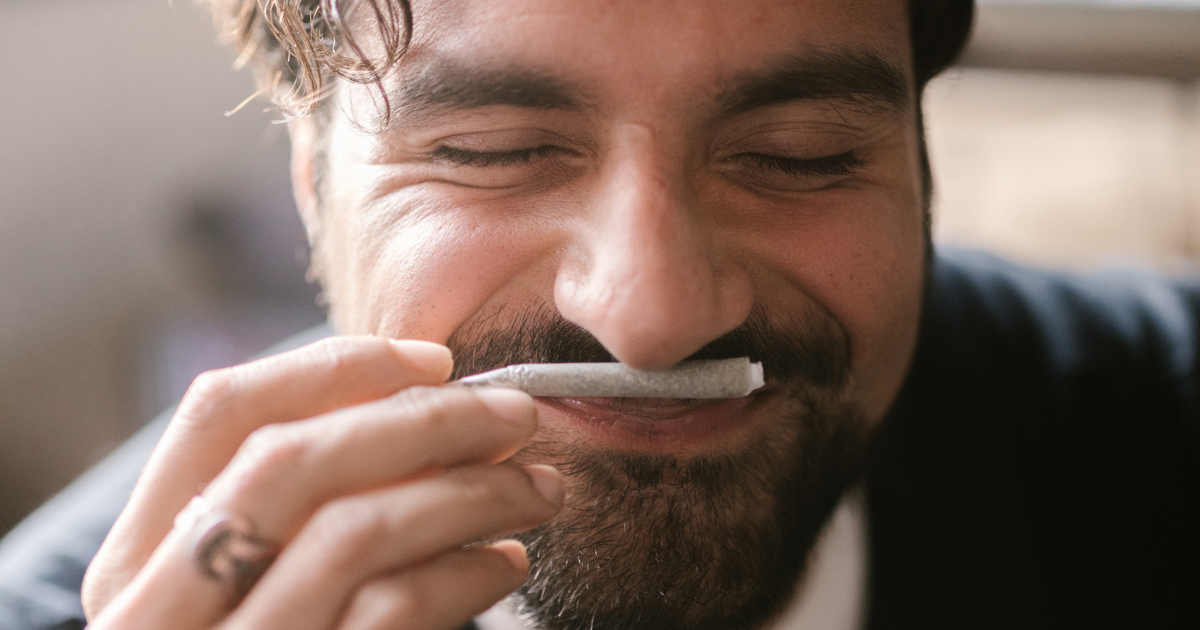
If you’ve ever smoked two strains with the same THC % and had two completely different experiences, that’s terpenes at work.
Terpenes are the aromatic compounds in cannabis. They’re what give each strain its unique smell and taste, but they also do more than just make your bud smell like lemon or pine. They interact with cannabinoids to shape the overall effect.
Myrcene might mellow you out. Limonene might lift your mood. Caryophyllene? That one’s got anti-inflammatory properties. When you combine them with THC and other cannabinoids, you get what’s called the entourage effect, and that’s where the magic happens.
So instead of chasing the highest number on the jar, look at the terpene profile. If a product doesn’t list it, ask. And if they can’t answer, maybe that’s not the flower for you.
Terps are where the vibe lives. Ignore them and you’re basically just buying on hype.
Why Chasing High THC Is Messing Up the Game
The obsession with THC percentage has done more damage than people realize.
Growers are under pressure to hit higher numbers to get shelf space and higher prices. Dispensaries push it because they know most people walk in asking, “What’s your highest THC?” And labs? Some of them inflate results because they know it helps products sell.
That means we’re losing out on diversity. Strains are being bred for potency instead of balance. Flavor and effect get pushed aside for one number. The result is flower that might test high, but doesn’t actually feel great.
If you’ve smoked something that left you anxious, edgy, or numb, even though it was 30 percent THC, you already know. It’s not about the number. It’s about how the full plant hits your system.
The more we chase lab results, the more we move away from what makes this plant powerful in the first place.
How to Actually Shop for Good Weed
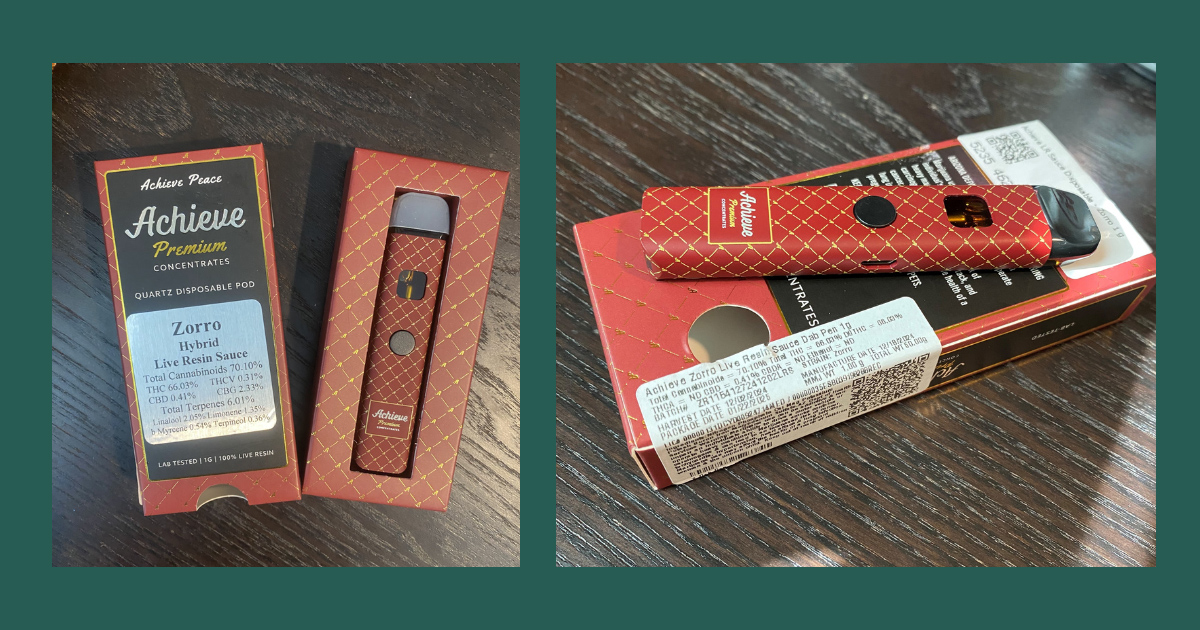
If you want better highs, stop letting the label make the decision for you.
Start by asking about the terpene profile. If the dispensary doesn’t know or can’t show it, that’s a red flag. Ask about harvest date. Flower loses flavor and effect the older it gets. Look at the bud. Smell it. Trust your senses.
Don’t be afraid to pick a strain that tests lower in THC if it smells incredible and feels right. The nose knows. That sharp citrus, earthy funk, or sweet gas isn’t just a bonus, it’s part of what shapes the high.
Also, consider what you actually want from your sesh. Are you trying to relax? Focus? Sleep? Create? Different strains do different things, and THC % won’t tell you any of that.
Treat cannabis like an experience, not a stat sheet.
What Really Matters (And What You Should Be Asking Instead)
If you’re still shopping for weed based on THC %, you’re playing yourself. That number might help you feel like you’re making a smart choice, but it’s usually just a shortcut, and not a good one.
What really matters is this:
- How was the flower grown? Indoor, outdoor, living soil: all of that affects quality.
- When was it harvested? Freshness matters more than percentage. Old flower can test high but feel flat.
- What terpenes are present? This is the flavor and the effect. If a product doesn’t list terps, you’re guessing.
- How do you want to feel? Uplifted, relaxed, creative, focused… THC % doesn’t answer that. The full profile does.
If a dispensary can’t help you with those answers, ask yourself why. You deserve better weed. And better info.
Real Questions from the Community (and Real Answers)
Our viral post brought a lot of heat, and a lot of honest questions.
Here are some we saw the most:
It’s Time to Rethink What “Good Weed” Means
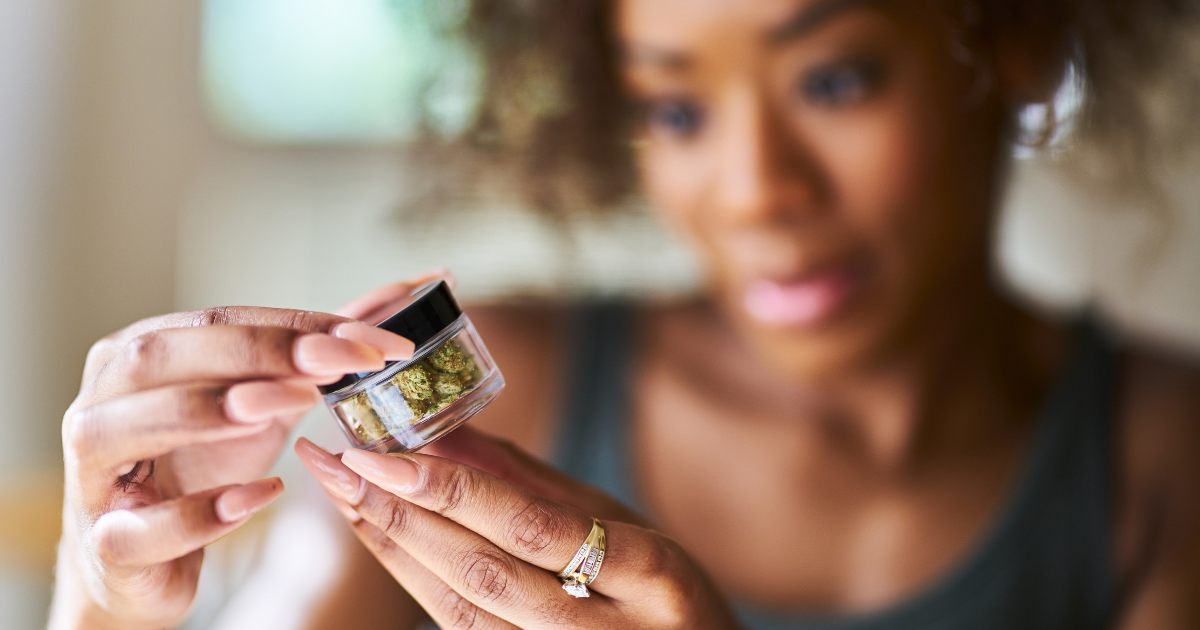
The people who grow this plant with love and care already know the truth. The people who smell before they smoke, who care about effect over ego, they know too. If that’s you, you’re already ahead.
You don’t need to chase the biggest number on the jar. You need to chase the flower that works for you.
That’s what Dank Budz is here for. We’re not pushing product. We’re just your budz, sharing what we’ve learned because we wish someone told us sooner.
Next time you’re at the dispensary, skip the % flex. Ask about the terps. Ask about the harvest. Ask how it was grown.
Then pick what feels right, not just what sounds loud.
Want to keep learning with us?
Check out our full guide on Cannabis 101 or hit our blog for more straight-up, no-BS education. And, if you aren’t already following us on Threads, well check us out over there too.
Until next time,
Your Dank Budz
